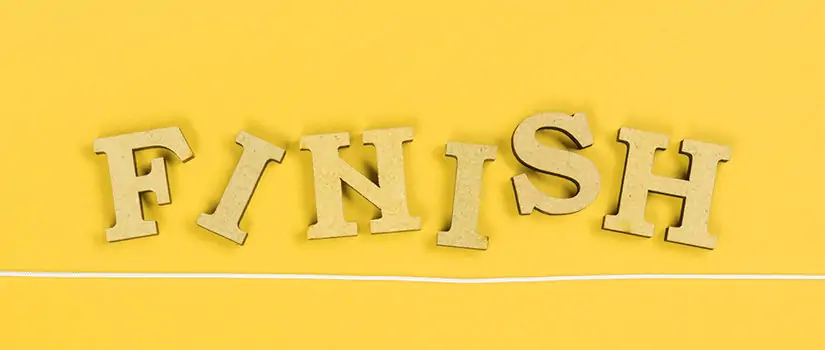And they lived happily ever after.
It’d be awesome if all papers could end that simply. However, be it a 500-word essay, a detailed research paper, or a 10-page report, there are a few fundamental rules when finishing a paper. All good conclusions are a summary of the paper’s main points, they never bring in new information, and they always leave the reader with something to think about based on the facts. Papers with the best grades also take it a step further.
For that extra edge, check out our five ideas for finishing a paper. In all our examples, we’ll assume you wrote a paper on the benefits of improving school lunch programs in the United States.
Don’t forget to finish up by proofreading your paper! BibMe Plus offers a handy grammar and spell check (and MLA and APA format citing tools) you can use 24/7.
Quote
You do not have to create every sentence in your paper yourself. In fact, some of the most important information can come from an expert on the subject, a public figure or any individual that plays a strong role in the story you are sharing. Quotes can help you finish with emotion.
Example quote ending:
“We can all agree that in the wealthiest nation on Earth, all children should have the basic nutrition they need to learn and grow and to pursue their dreams, because, in the end, nothing is more important than the health and well-being of our children” (Obama).
If you have a bibliography, add a citation for your quote source. It doesn’t matter if it is in MLA format or another style, it’s a good practice to always create citations for information you’ve used.
Question
If you really want your readers to agree with your ideas, end your paper with a question. The best question allows your readers to think for themselves but also leads them to the conclusion you want.
Example question ending:
If the nutrition and quality of school lunches can be improved without budget increases, is there any good reason for them to remain the same?
Action
You’ve probably seen this type of ending a lot in commercials. Instead of only providing information, you ask your reader to do something. Phrases like: call now, text, and reply are pretty familiar, but any phrase using a command will work.
Example action ending:
Now that you know the benefits of better school lunches, talk to your principal to see what you can do to make a change in your community.
Forecast
Forecast statements usually begin with the words “when” or “if.” This ending allows the writer to present a theory about the future based on the facts discussed in the paper.
Example forecast ending:
When new school lunches are first introduced, it will take a lot of time and effort to see change nationwide, but each school that succeeds will serve as inspiration to the next. One day, lunches of fatty, processed food will be history.
Big picture
Your paper should focus on a very specific subject, but one way to end your work is to give an example of how your topic could impact the larger world around it. When writing this type of ending, you have to be very careful not to introduce entirely new information.
Example big picture ending:
The fight to change school lunches is not only about the daily nutrition of our nation’s children, it is an investment in a healthier America for generations to come.
Now that we’ve taught you a few new ways to end your paper, which will you choose?
Before you begin writing, build up your grammatical knowledge with our guides on different parts of speech. Review our examples of interjections, list of determiners, conjunction definition, and other helpful resources.

